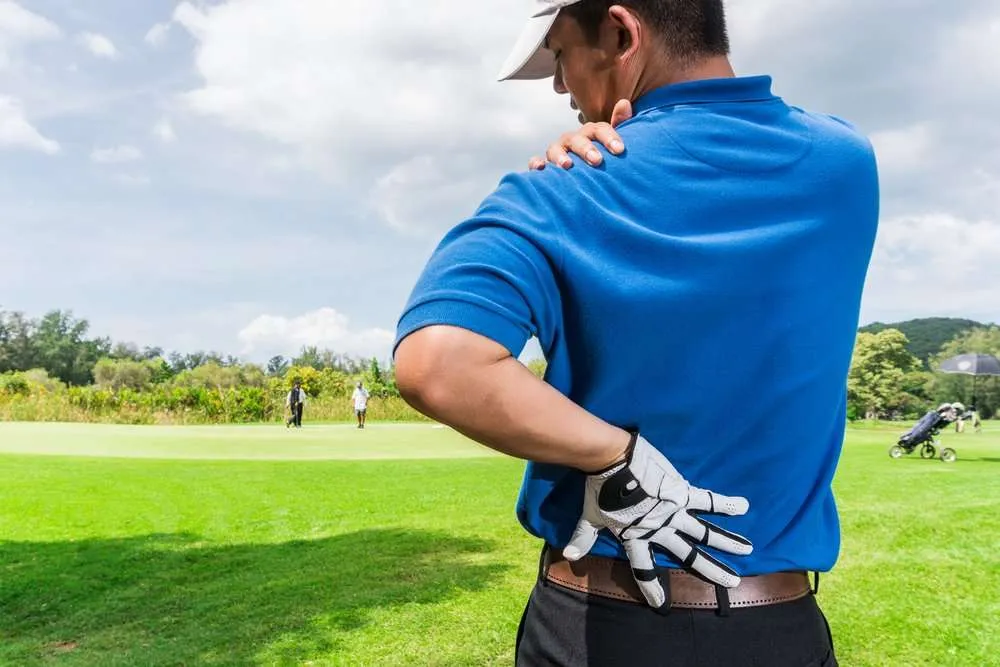Golf is more than just a sport; it’s a way of life for many enthusiasts. The gentle swaying of the lush green fairways, the crisp crack of the club against the ball, and the camaraderie with fellow golfers make it a cherished pastime. However, this seemingly leisurely sport can take a toll on your body, leading to aches, pains, and injuries. That’s where physical therapy for golfers, helping golfers of all levels to not only improve their game but also enhance their overall well-being.
The Physical Demands of Golf:
Golf may not require the intense physical exertion seen in sports like football or basketball, but it places unique demands on the body. The golf swing, in particular, involves a complex interplay of muscles, joints, and balance. These physical demands can lead to various issues, such as:
- Muscle Imbalances:
The repetitive nature of golf swings can lead to muscle imbalances, where certain muscles become overused while others remain underdeveloped. This can affect posture and lead to chronic pain.
- Joint Strain:
The torque generated during a golf swing can put a significant strain on the joints, especially the wrists, elbows, shoulders, and lower back. Over time, this can lead to joint pain and injury.
- Flexibility and Range of Motion:
Golfers require a good range of motion and flexibility to execute a proper swing. Stiffness in the joints and muscles can hinder performance and increase the risk of injury.
How Physical Therapy Can Help:
Physical therapy is a valuable resource for golfers looking to improve their game and stay injury-free. Here are some benefits of physical therapy for golfers:
- Injury Prevention:
Physical therapists can assess your posture, movement patterns, and muscle imbalances to identify potential trouble areas. By addressing these issues early on, you can reduce the risk of injuries that could keep you off the course.
- Improved Swing Mechanics:
Physical therapists work on enhancing your body’s biomechanics, helping you achieve a more efficient and effective golf swing. This can lead to increased power and accuracy in your shots.
- Strength and Conditioning:
A tailored strength and conditioning program can help you build the specific muscles needed for golf. Strengthening your core, legs, and upper body can improve stability and prevent injuries.
- Flexibility and Mobility:
Physical therapists can design stretching routines to improve your flexibility and range of motion. Increased flexibility can lead to a more fluid swing and reduced strain on your joints.
- Pain Management:
If you’re already dealing with golf-related pain or injuries, physical therapy can help manage your symptoms and expedite your recovery. Therapists use various modalities, such as manual therapy and ultrasound, to reduce pain and inflammation.
- Mental Well-being:
Golf is not just a physical game; it’s also a mental one. Physical therapy can teach relaxation techniques and mental strategies to help golfers stay focused and calm under pressure.
The Journey to a Healthier Golf Game:
Embarking on a physical therapy journey to enhance your golfing experience involves several key steps:
- Evaluation:
Your physical therapist will conduct a thorough assessment of your current physical condition, golf swing, and any existing injuries or discomfort.
- Personalized Plan:
Based on the evaluation, your therapist will create a personalized treatment plan tailored to your specific needs and goals. This plan may include exercises, stretches, and hands-on techniques.
- Consistent Practice:
Consistency is crucial in physical therapy. You’ll need to commit to regular sessions and diligently follow your therapist’s instructions and home exercises.
- Monitoring Progress:
Your therapist will continually assess your progress and adjust your treatment plan accordingly. This ensures that you’re making steady improvements and achieving your golfing goals.
- Long-term Wellness:
Physical therapy is not just a quick fix; it’s a pathway to long-term wellness. Many golfers incorporate ongoing physical therapy into their routine to maintain peak performance and prevent injuries.
Success Stories on the Green
Countless golfers have experienced the transformative effects of physical therapy on their game and well-being. Let’s take a look at a few success stories:
- John’s Journey to Pain-Free Golf:
John, an avid golfer, had been struggling with chronic lower back pain that was affecting his swing. After a few months of physical therapy focused on core strength and flexibility, John not only experienced relief from his pain but also saw a significant improvement in his distance and accuracy.
- Emma’s Comeback after Surgery:
Emma, a competitive amateur golfer, underwent shoulder surgery due to a rotator cuff tear. Physical therapy was an essential part of her rehabilitation. Through targeted exercises and rehabilitation techniques, Emma not only recovered but also returned to the game stronger than ever.
- Tom’s Consistent Performance:
Tom, a senior golfer, had been facing age-related mobility issues that were impacting his game. With the help of physical therapy, he regained flexibility and improved balance. This allowed Tom to continue enjoying golf well into his retirement years.
Conclusion
golf is more than just a game; it’s a way to connect with nature, stay active, and socialize with friends. To ensure you can continue enjoying this wonderful sport for years to come, consider incorporating physical therapy into your golfing routine. Whether you’re a seasoned pro or a casual weekend golfer, physical therapy can help you improve your swing, prevent injuries, and enhance your overall well-being. So, swing into wellness and tee off for a healthier, more enjoyable golf experience. Your body and your golf game will thank you.


 Home
Home










